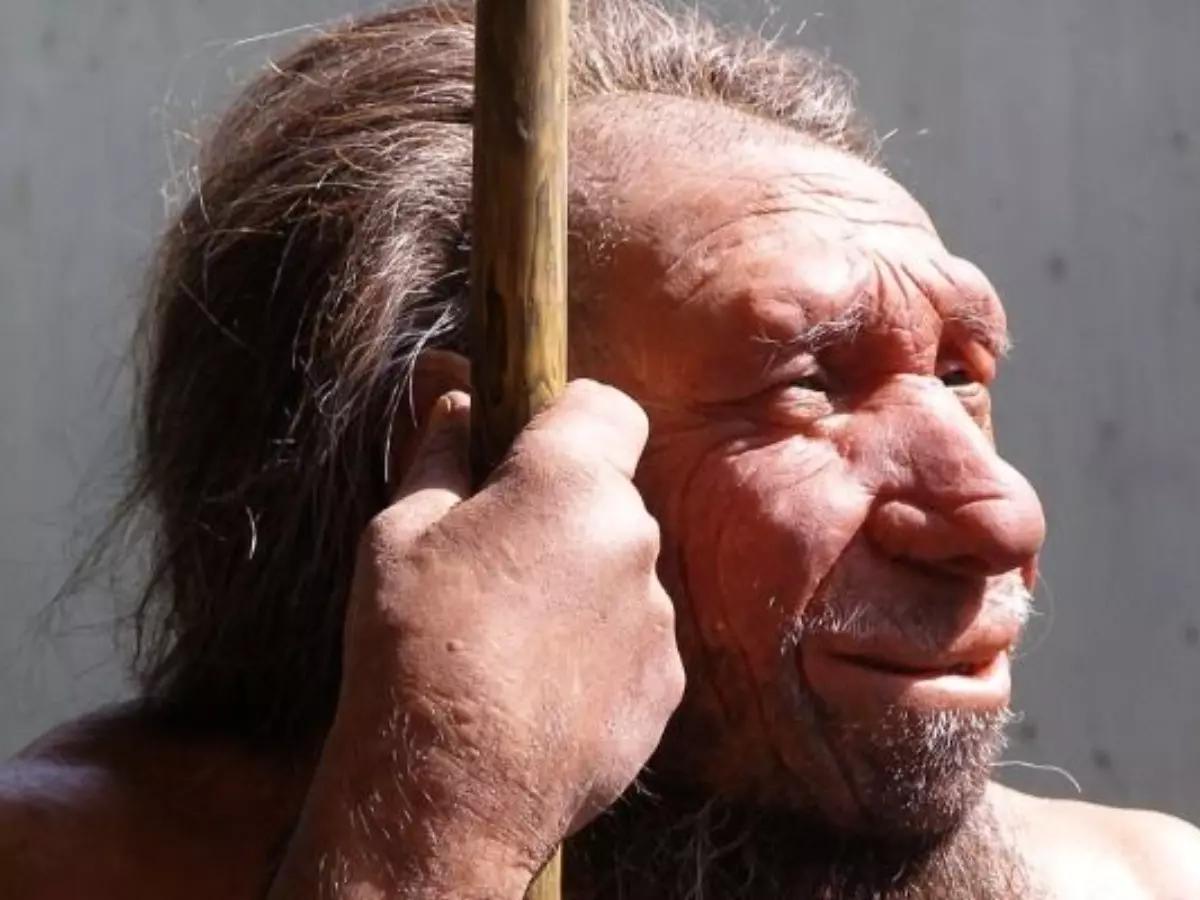Explained: Who Were The Neanderthals That Coexisted With The Modern Human
Researchers digging up a cave channel on the Rock of Gibraltar discovered a new chamber that has been sealed off from the rest of the world for over 40,000 years and might provide insight on the culture and customs of the Neanderthals who inhabited the area for thousands of years.

Researchers digging up a cave channel on the Rock of Gibraltar discovered a new chamber that has been sealed off from the rest of the world for over 40,000 years and might provide insight on the culture and customs of the Neanderthals who inhabited the area for thousands of years.
Who is a Neanderthal?
The name neanderthalensis comes from the Neander Valley in Germany, where the first significant specimen was found in 1856. The German term for valley is 'Tal,' although this was spelled 'Thal' in the 1800s. Homo neanderthalensis thus translates as "Human from the Neander Valley."
 Erich Ferdinand/Flickr
Erich Ferdinand/Flickr
A few people pronounce the name of this species as Neandertals (no 'h') to represent the present German spelling instead of the existing spelling, Neanderthal, which was used to describe the species.
Neanderthals are an extinct category of fossil humans who appeared in Western Eurasia during the mid-Middle Pleistocene as well as communicated with the first modern humans entering in Europe approximately 45,000 years ago prior to actually disappearing from the fossil evidence around 40,000 years ago.
They survived the Ice Age. Neanderthals frequently sought refuge from ice, snow, and other inclement weather in Eurasia's abundant limestone caves. Most of their fossils have been discovered in caves, giving rise to the popular notion of them as "cavemen."
 Unsplash/Representational image
Unsplash/Representational image
The Neanderthals were a fairly successful species, having adapted well to the volatile environment of a region characterised by advancing and retreating ice sheets.
Their short, stocky shape evolved as an adaptation for cooler temperatures as it consolidated heat. The Smithsonian Institution claims that the wide nose helped humidify and warm cold air, but this claim is debatable.
According to existing evidence from both fossil records and DNA, the Neanderthal and modern human lineages split at least 500,000 years back. Although homosapien and neanderthal have some similarities, they have many structural variations.
Neanderthal vs Homosapien
These humans had a different build than that of the taller and bulkier modern humans, with Neanderthal men standing approximately 169 cms tall and Neanderthal women standing roughly 160 cms tall, and sporting broad and deep rib cages. Their prominent brow ridges, sizable faces with suitably big noses, and lack of chin further distinguish them.
Aside from that, Neanderthals share a slew of derived characteristics with modern humans, including enlarged brains (their brain cover were even significantly bigger than humans) and a less protruding face than most other earlier archaic humans. These characteristics distinguish Neanderthal skulls from modern humans. In terms of hair and skin colour, Neanderthals most likely had a wide range 每 certainly more than modern humans.
 Getty images
Getty images
Scientists compared the genetic profile of humans to that of their closest ancient relative and concluded that "there is a little Neanderthal in almost all of us."
Most people who live outside of Africa can trace around 4% of their DNA back to a Neanderthal ancestor, as a result of crossbreeding between the 2 groups following the region's great migration. According to reports, anthropologists have lately discovered the strongest evidence that early humans mated with Neanderthals in the Middle East's Fertile Crescent region.
Neanderthal gene and Covid deaths
According to an Oxford academic, an only one Neanderthal gene reported in one out of every six Britons is responsible for at least to a million Covid casualties.
Dr James Davies, from the university*s Radcliffe Department of Medicine, told the Telegraph, the amount of fatalities worldwide from this genetic version, that is found in one in every six Britons, "is in the hundreds of thousands to a million."
According to 2 recent studies, 2 long portions of DNA passed down from Neanderthals seem to develop resistance or susceptibility to severe covid-19, based on which is present.
 Unsplash/Representational image
Unsplash/Representational image
Hugo Zeberg and Svante Paabo of the Max Planck Institute for Evolutionary Anthropology in Leipzig led the research, which pioneered the research on Neanderthal DNA.
Their first study describes a Neanderthal sequence of DNA referred to as a "haplotype" that is linked to an increased risk of serious illness. Having 1 copy of the haplotype, that is found on the third of the 46 chromosomes found in humans, increases the likelihood of being admitted to intensive care.
Neanderthal genes and immune system regulation
One of its genes produces a protein that engages with the cell receptors used by sars-cov-2 (the virus that causes covid-19) to enter and hijack cells. The haplotype is also believed to be responsible in the fabrication of signalling proteins known as cytokines, which aid in immune system regulation. When the Sars-CoV-2 virus fuses to the ACE2 receptor on a human cell, the gene changes its behaviour, according to the researchers.
It indicates that cells in the lungs respond to infection more slowly.
One way that covid-19 kills is through an overly aggressive immune reaction.
 Unsplash/Representational image
Unsplash/Representational image
The haplotype slows the propagation of RNA viruses, including sars-cov-2, by causing infected cells to self-destruct instantly. It is known to offer some prevention against West Nile virus, hepatitis C, and, most intriguing, sars-cov-1, which resulted in the 2002 sars epidemic.
According to The Week, about 15% of Europeans and nearly 60% of South Asians have the Neanderthal type of the gene.
It's not the first time Neanderthal genes have been associated with more severe Covid symptoms. Research published in October 2020 noted that genes inherited from our Neanderthal forefathers may raise human's risk of contracting a more severe form of Covid-19.
For more on news and current affairs from around the world please visit Indiatimes News.
